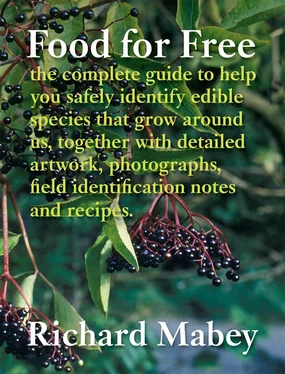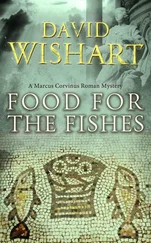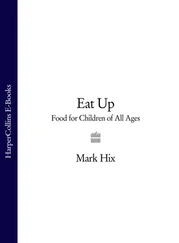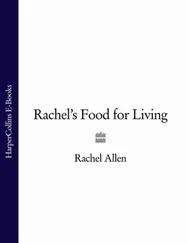
© Bob Gibbons/FLPA
© ImageBroker/Imagebroker/FLPA, © Cisca Castelijns/FN/Minden/FLPA, © Cisca Castelijns/FN/Minden/FLPA, © David Hosking/FLPA
Chestnuts are highly versatile. They can be pickled, candied, or made into an amber with breadcrumbs and egg yolk. Boiled with Brussels sprouts they were Goethe’s favourite dish. Chopped, stewed and baked with red cabbage, they make a rich vegetable pudding.
Chestnut purée
Chestnut purée is a convenient form in which to use the nuts. Shell and peel the chestnuts. This is easily done if you boil them for 5 minutes first. Boil the shelled nuts again in a thin stock for about 40 minutes. Strain off the liquid and then rub the nuts through a sieve, or mash them in a liquidiser. The resulting purée can be seasoned and used as a substitute for potatoes, or it can form the basis of stuffings, soups and sweets, such as chestnut fool.
Chestnut and porcini soup
For 4 people
250 g (½ lb) chestnuts (tinned will do)
30 g (1 oz) dried porcini (better than fresh for this soup)
1 large onion
4 rashers of bacon
100 g (3½ oz) butter
lemon juice
fino sherry
• Peel the chestnuts, if you are using fresh ones, and boil for an hour in a large saucepan with just enough water to cover (40 minutes will do if you’re using vacuum-packed nuts).
• Reconstitute the dried porcini in sufficient boiling water to cover them, and leave to soak for 30 minutes. Hang on to the water.
• Meanwhile peel and finely slice the onion, cut the bacon rashers into broad slices, and fry both in the butter for about 10 minutes, until the onion is golden. Then slip this mixture, plus the porcini and their soaking water into the pan containing the chestnuts and their water. Simmer for a further 15 minutes.
• Cool the soup a little, and liquidise in batches until it’s thoroughly smooth, adding water if necessary until it is at your preferred consistency.
• Reheat in the pan with a squeeze of lemon juice, and just before serving add a small glass of fino sherry.
Chestnut flan
Chestnut flour is difficult to make at home, but is obtainable in most health food stores. This is a recipe from Corsica.
100 g (3½ oz) chestnut flour
750 ml (1½ pints) milk
150 g (5 oz) sugar
butter
4 eggs
Put the chestnut flour, milk and sugar into a saucepan and heat gently, stirring frequently until the flour lumps have vanished. Continue to simmer, just short of boiling until the mixture becomes quite thick (about 10 minutes). Line a round oven dish, about 5 cm deep, with greaseproof paper, and rub a little butter over the paper. Beat the eggs in a bowl, and stir into the chestnut mixture. Pour into the dish and bake in an oven at 160°C/gas 3 for 40 minutes. Leave to cool overnight., or for at least a few hours, and turn upside down on to a large plate before serving.
PS: Chestnut flour can be substituted for wheat flour in almost any recipe, provided you add baking powder to help it rise a little. Try it, for instance, in a Yorkshire pudding, cooked under the meat.
© Gary K Smith/FLPA
© Michael Krabs/Imagebroker/FLPA
© David Hosking/FLPA
Oak OaQuercus robur/Quercus petraea

A common deciduous tree up to 35 m (115 ft) high, typically with a broad, domed crown. The two common species are pedunculate oak (Quercus robur), which occurs throughout Britain, and sessile oak (Q. petraea), which is the dominant species in northern and western Britain, and in Ireland. Leaves are distinctively shaped, with irregular lobes. The fruits (acorns) ripen in September to October.
The oak tree has formed part of our folklore and history for centuries, not only as a source of timber for building houses and ships but also as a source of food. Like beechmast, however, the chief economic use of acorns has been as animal fodder, and they have been used as human food chiefly in times of famine. The raw kernels are forbiddingly bitter to most palates, but chopped and roasted they can be used as a substitute for almonds. In Europe the most common use of acorns has been to roast them as a substitute for coffee, and they were recommended for this role during the Second World War. Chop the kernels, roast to a light brown colour, grind up, then roast again.
Hazel Corylus avellana

An abundant and widespread tree, found in woods, hedgerows and scrubland. A small tree or multi-stemmed shrub, 1.5–3.5 m (4–12 ft) high, with roundish, downy, toothed leaves. Well known for the yellow male catkins, called ‘lambs’ tails’, which appear in the winter. Nuts from late August to October, 1–2.5 cm (½–1 inch) long, ovoid and encased in a thick green-lobed husk.
The hazel was among the first species to recolonise the British Isles after the last Ice Age. It is an extremely useful tree, with leaves that can be used as food for livestock, branches for building fences and shelters, and nuts that can be eaten as food. Widely eaten in prehistoric times, the hazelnut became part of Celtic legend – its compact shape, hard shell and nutritious fruit was an emblem of concentrated wisdom. Today they are grown commercially in many parts of the world, and are second only to the almond as a world nut crop. Hazelnuts begin to ripen in mid-September, at about the same time that the leaves begin to yellow. You may have to compete with the birds and squirrels, as the nuts do not just provide a treat for humans. Look for them at the edges of woods and in mature hedges. Search inside bushes for the nuts, as well as working round them, and scan them with the sun behind you if possible. Use a walking stick to bend down the branches, and gather the nuts into a basket that stays open whilst you are picking: a plastic bag with one handle looped over your picking wrist is a useful device.
If the ground cover under the bush is relatively clear of grass, then it is worthwhile giving the bush a shake. Some of the invisible ripe nuts should find their way onto the ground after this. In fact it is always worth searching the ground underneath a hazel. If there are nuts there which are dark or grey-brown in colour then the kernels will have turned to dust. But there is a chance that there will also be fresh windfalls that have not yet been picked at by birds.
Once you have gathered the nuts, keep them in a dry, warm place but in their shells, so that the kernels don’t dry out as well. You can use the nuts chopped or grated in salads, or with apple, raisins and raw oatmeal (muesli). Ground up in a blender, mixed with milk and chilled, they make a passable imitation of the Spanish drink horchata (properly made from the roots of the nutsedge, Cyperus esculentus). But hazelnuts are such a rich food that it seems wasteful not to use them occasionally as a protein substitute. Weight for weight, they contain fifty per cent more protein, seven times more fat and five times more carbohydrate than hens’ eggs. What better way of cashing in on such a meaty hoard than the unjustly infamous nut cutlet?
© Marcus Webb/FLPA

© Robert Canis/FLPA
Читать дальше
















